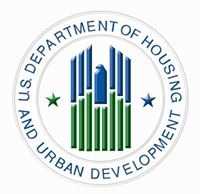June 27, 2024, marks the 90th anniversary of the creation of the Federal Housing Administration under the National Housing Act
WASHINGTON – RealEstateRama – The Federal Housing Administration (FHA) is recognizing the 90th anniversary of its creation under the National Housing Act of 1934, which was signed by President Franklin Delano Roosevelt. HUD celebrated today’s anniversary with an event at its Washington D.C. Headquarters, which included opening remarks by HUD Acting Secretary Adrianne Todman and Federal Housing Commissioner Julia Gordon. Attendees included past FHA Commissioners and leaders from the housing finance and advocacy communities.
“The Federal Housing Administration has provided a path to homeownership for millions of people, and changed their families lives for generations to come,” said HUD Acting Secretary Adrianne Todman. “Under the Biden-Harris Administration, we are ensuring that FHA is accessible to everyone, particularly first-time homebuyers and people we have provided with fair access to homeownership in the past.”
“FHA’s 90th anniversary is an opportunity to reflect on both the successes and challenges of the program throughout its nine decades, and to celebrate the enduring value FHA offers to this nation’s first-time homebuyers, borrowers of color, and underserved communities,” said Federal Housing Commissioner Julia Gordon. “As one of the first public-private partnerships, FHA has a rich history of supporting the nation’s housing system in all market conditions and making homeownership possible for those not adequately served by the private market.”
FHA is the largest mortgage insurer in the world, serving a higher percentage of first-time home buyers, low- and moderate-income households, and people of color than any other mortgage channel. More than 91 million of the nation’s low- and moderate-income and first-time homebuyers have benefitted from FHA’s affordable mortgage financing since its creation, using FHA programs to build generational wealth through homeownership. More than seven million American households currently live in a home financed by an FHA-insured mortgage. On the commercial side, FHA currently insures more than 11,000 multifamily mortgages, which provide rental homes for more than 1.4 million individuals and families, as well as and more than 3,700 residential care and hospital facilities, which support access to quality healthcare in both rural and urban communities.
Under the Biden-Harris Administration, FHA has made significant changes to the program to overcome barriers to homeownership, to increase the availability of affordable rental housing, and to support quality health care facilities.
For example, under this Administration, FHA has:
- Served more than 3.4 million homebuyers and renters: Since 2021, FHA has served more than 2.9 million homebuyers, the vast majority of whom were buying a home for the first time, while also financing the rental homes of more than half a million individuals and families.
- Reduced costs for homebuyers: FHA cut its Single Family annual mortgage insurance premium by 35 percent in March 2023. From its implementation through May 2024, this reduction has saved more than 920,000 borrowers, an average of more than $885 per year. Together, these borrowers are saving more than $814 million through May 2024.
- Helped senior homeowners to age in place: Through its Home Equity Conversion Mortgage program, FHA helped more than 164,000 senior homeowners aged 62 or older to age in place.
- Supported greater access to quality healthcare: Under its Residential Care Facility and Hospital mortgage insurance programs, FHA insured more than 840 mortgages for nursing homes, assisted living facilities, board and care homes, and acute care hospitals throughout the nation.
- Removed barriers to homeownership: FHA increased access to homeownership for borrowers with student loan debt, those seeking to purchase manufactured homes or properties with Accessory Dwelling Units, and households with a strong history of on-time rental payments.
- Helped combat appraisal bias: FHA participated in HUD’s Property Appraisal and Valuation Equity Interagency Task Force and made sure that all its lenders implemented a clear process for borrowers to raise concerns about inaccurate appraisals, including improper racial bias.
- Assisted borrowers in avoiding foreclosure: Through its special COVID-19 forbearance and loss mitigation home retention options, including its new Payment Supplement Partial Claim, FHA helped two million homeowners to stay in their homes and/or otherwise avoid foreclosure through the period of the Covid pandemic.
- Supported financing of manufactured home communities: FHA has made cooperatives, non-profit entities and consortia, state and local governments, community development financing institutions, and Indian Tribes eligible to use FHA-insured multifamily loans to finance the acquisition of manufactured home communities.
- Implemented flexibilities to support affordable rental housing development: FHA made financing for the development of new affordable rental housing more accessible by increasing the large loan limit threshold for FHA-insured multifamily mortgages and restarting and extending indefinitely a risk sharing program with housing finance agencies and the U.S. Department of the Treasury’s Federal Financing Bank.
- Supported energy efficiency and climate resilience measures for assisted housing programs. Through its Green and Resilient Retrofit Program (GRRP), funded under the President’s Inflation Reduction Act, HUD has awarded more than $754 million in grants and surplus cash loans as of June 25, 2024. These grants and loans will help finance energy efficiency and climate resilience measures at 139 properties participating in HUD assisted housing programs, many of which also have FHA-insured mortgages, and containing more than 16,400 rental homes for low- and moderate-income individuals and families.
- Furthered energy efficiency measures in residential care facilities: FHA extended its successful Multifamily Green Mortgage Insurance Premium to its Residential Care Facility mortgage insurance program, providing cost savings to facilities that meet industry-recognized energy efficiency standards.
Key Events in FHA’s History
- June 27, 1934: The 1934 National Housing Act was signed into law by President Franklin Delano Roosevelt, fundamentally changing the federal government’s role in housing and creating the Federal Housing Administration.
- 1940: FHA began paying all of its expenses from generated income.
- 1947: FHA began its insurance program for manufactured housing.
- 1950: The Housing Act of 1950 amended the National Housing Act to encourage the production of housing for middle-income families and established Section 213 for mortgage insurance on cooperative housing projects.
- 1959: FHA began its Section 232 program to insure mortgages for residential care facilities, including nursing homes.
- 1961: The Housing Act of 1961 authorized FHA’s Multifamily Section 221(d)(3) below market interest rate housing program for low-income rental housing.
- 1962: President John F. Kennedy issued Executive Order 11063, directing federal agencies to combat all form of racial discrimination and segregation in federal housing, which discontinued FHA’s reliance on racially discriminatory redlining.
- 1968: The Housing and Urban Development Act of 1968 established Section 236 for the production of low-cost rental housing, and Section 242, which supported capital financing for hospitals. The 1968 Act also authorized the creation of a HUD Housing Counseling Program to administer a program for housing counseling agencies to provide counseling services to renters, homebuyers, and homeowners.
- 1974: The Multifamily Section 223(f) refinancing program began, which insured mortgages loans for the purchase or refinancing of existing multifamily properties with or without requiring substantial rehabilitation.
- 1987: The Housing and Community Development Act of 1987 established the Home Equity Conversion Mortgage (HECM) reverse mortgage program that allowed elderly homeowners to borrow against their home’s equity as a means to age in place.
- 2008: The Housing and Economic Recovery Act (HERA) included the FHA Modernization Act which provided reforms to streamline and expand FHA’s loan programs.
- During the 2008 economic crisis, FHA played a vital part in supporting the nation’s housing market, demonstrating to a degree it never had before its countercyclical role in the housing market and providing continued access to mortgage financing for qualified borrowers amid severely constricted lending conditions.
- 2010: The Dodd-Frank Act established the HUD Office of Housing Counseling as a separate office reporting to the Assistant Secretary for Housing and Federal Housing Commissioner.
- 2021: FHA developed the COVID-19 Loss Mitigation waterfall that provided millions of FHA borrowers struggling financially because of the pandemic with new options to avoid foreclosure and retain their homes.
###
HUD’s mission is to create strong, sustainable, inclusive communities and quality affordable homes for all.
More information about HUD and its programs is available at www.hud.gov and https://espanol.hud.gov.
You can also follow HUD on Twitter and Facebook or sign up for news alerts on HUD’s Email List.
Learn More About HUD’s Property Appraisal and Valuation Equity Work
HUD Public Affairs
(202) 708-0685








